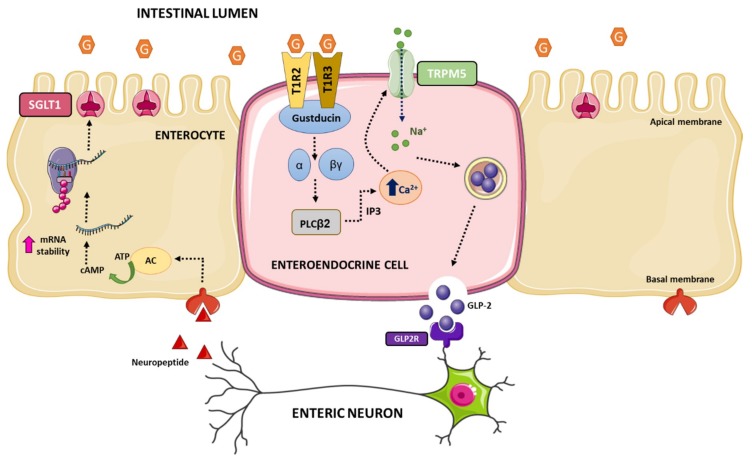Figure 4.
Model of intestinal glucose sensing and signaling pathways. Glucose (G) binds and activates the taste receptor type 1 member (STR) comprised of a heterodimer T1R2+T1R3 and G-protein gustducin, leading to its dissociation into Gα and Gβγ subunits and activation of phospholipase C β2 (PLCβ2) in enteroendocrine cells. Inositol 1,4,5-triphosphate (IP3) triggers intracellular calcium release resulting in increased sodium flux through type-5 transient receptor potential cation channel (TRPM5). Depolarization of the basal membrane results in GLP-2 release, which triggers release of an unidentified peptide from enteric neurons at neighbor enterocytes. Signal transduction in enterocyte leads to cAMP-mediated adenylate cyclase (AC) production that increases stabilization of Slc5a1 mRNA and ultimately augmented translation and insertion of SGLT1 into apical membrane. This figure was created using Servier Medical Art.

